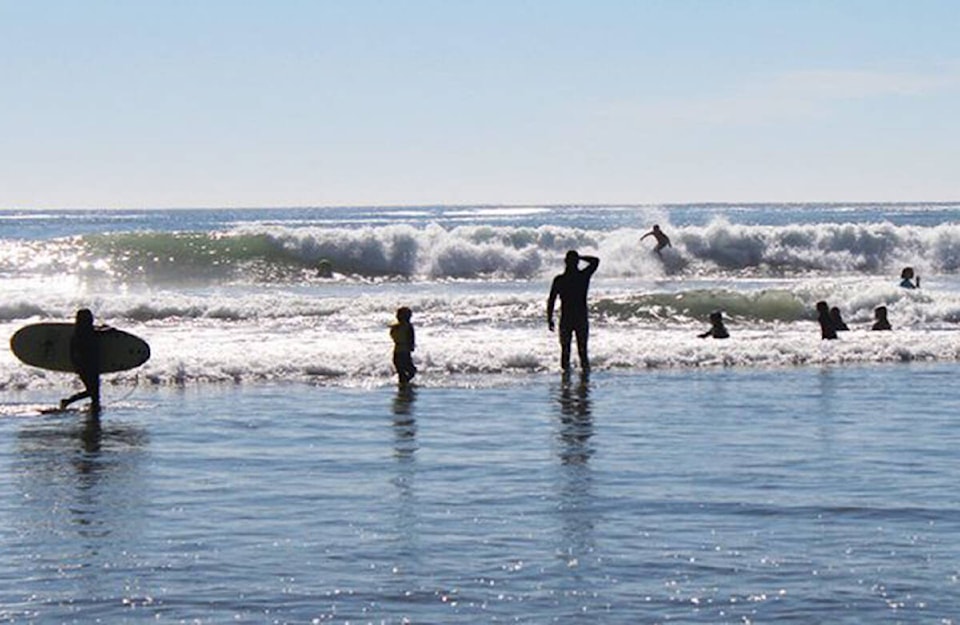Tourism Tofino has set its sights on increasing off-season visitation while decreasing the blows that tourism’s hammer has been landing on the local environment and community.
In an Oct. 12 presentation to council, Tourism Tofino’s executive director Nancy Cameron unveiled the destination marketing organization’s tactical plan for tourism in 2022.
She explained the plan was developed through feedback collected through a process conducted this past winter and spring that involved 60 people in the tourism industry as well as non-industry residents.
She said the process yielded five key themes, including over-tourism, off-season visitation, increased collaboration with local First Nations and redefining tourism to measure success beyond growth.
“Tourism is recognized and appreciated as core to the Tofino economy, however concern exists about summer ‘over tourism’ and impact on (the) community,” she said.
She added that increasing visitation in the offseason would benefit local business and increase long-term, year-round, employment opportunities for residents.
“We understand that all things and beings in Tofino are connected in oneness, success in tourism goes beyond success in business. It also means success in life, success for the communities and success in the preservation of the natural environment,” she said. “Every interaction with visitors, business and community is an opportunity to raise consciousness about conserving, protecting and regenerating the environment and our local way of life.”
She said a key goal is to reach a 69 per cent average occupancy at tourist accommodations during the offseason months between October and May by 2027, which would represent a 10 per cent increase over 2019’s pre-COVID numbers, adding the DMO plans to develop and encourage festivals and events outside the peak season.
The DMO is also aiming to increase visitor spending, foster longer stays and repeat visits and to reach 70,000 visitor interactions annually by 2027, a 20 per cent increase over 2019’s numbers.
“These interactions provide us with an opportunity to influence visitors to see and do more, spend more at our businesses than they had originally planned,” she said. “Additionally, we can educate peak-season travellers about the benefits of non-peak travel and encourage them to return in the fall, winter, or spring.”
She added collaborating with First Nations will be key and that Tourism Tofino plans to increase First Nations visibility and interpretation at the Cox Bay visitor centre.
She suggested that “budgeting during this pandemic has been and continues to be tricky,” adding that Tourism Tofino is currently projecting 2022’s visitation number to be similar to 2019’s pre-COVID visitation.
She said the DMO’s revenue streams are expected to be roughly $1.35 million with about $1.2 million coming from the Municipal, Regional and District Tax (formerly known as the additional hotel room tax) $101,750 from retail sales and $40,000 from federal and provincial grants.
Those funds will be spent predominantly on promoting the area to potential travelers with $603,556 slated for destination marketing.
Cameron said roughly $367,546 is expected to be spent on visitor services, $207,618 towards administration and overhead and $172,530 on destination and product experience management.
Coun. Tom Stere commended Cameron for her work to guide the community through the COVID-19 pandemic.
“Many of the goals that you’ve outlined in this strategic plan you’re already doing. I’ve seen evidence of it and it’s really very solid,” he said.
Coun. Cathy Thicke said she was happy to hear the focus on increasing tourism in the offseason.
“I take to heart and applaud the strategic plan in regards to the non peak visitation to encourage long term, year-round employment,” she said. “We really do suffer quite a bit from the peaks and valleys in our town not just in terms of the economics, but just how we struggle socially too in the winter.”
Thicke added though that residents must be prioritized over tourists regardless of the season.
“Somehow, within this community, we need to really build the quality of life. We need to build quality of life amenities for people and I think this is something that perhaps has been overlooked in Tourism Tofino’s strategic plans in the last four years,” she said, adding quality of life must be considered for “the common people, not just the overseers of the larger hotels.”
Cameron agreed public input would be paramount to ensuring the DMO is heading in the right direction and added that an upcoming Tourism Master Plan renewal process would be “a great engagement tool,” noting Tourism Tofino’s current master plan expires in 2024.
“The benefit of it is that it is so robust and it does engage the whole community and the end result is that common vision that we’re all working with for tourism as an economic engine for our community, but community first,” she said. “I do look at that process as being critical.”
andrew.bailey@westerlynews.ca
Like us on Facebook and follow us on Twitter
READ MORE: Resorts in Tofino butt heads with district over MRDT spending
READ MORE: Tofino council questions businesses encroaching on public beaches
READ MORE: Tourist blockade at Tofino-Ucluelet backroads held peacefully
